G20 finance ministers and central bank governors ended the summit in Buenos Aires with a joint communique that emphasized the importance of international trade. And they urged for the need for “further dialogue and actions”. But the communique fell short of anything else to push back protectionism.
The communique noted “International trade and investment are important engines of growth, productivity, innovation, job creation and development.” And, “we reaffirm the conclusions of our Leaders on trade at the Hamburg Summit and recognise the need for further dialogue and actions.” They pledged to work to “strengthen the contribution of trade to our economies.”
Below is the full communique covering areas like technology, infrastructure, global financial system, cross-border capital flow, debts, international tax system and even Cryto-assets. But trade wasn’t mentioned beyond the first paragraph.
Communiqué
Finance ministers and central bank governors
March 20, 2018, Buenos Aires
The global economic outlook has continued to improve since we last met in October 2017, with the broadest synchronised global growth upsurge since 2010, and a pick-up in investment and trade. While we welcome this progress, recent market volatility despite sound fundamentals of the global economy is a reminder of risks and vulnerabilities. Downside risks persist and, over the medium term, challenges remain to raise growth and make it more inclusive. This is our moment to take action to address structural growth impediments, rebuild buffers, reduce excessive global imbalances, and mitigate risks. We discussed key risks to the outlook, including financial vulnerabilities that could be revealed with a faster than expected tightening of financial conditions and heightened economic and geopolitical tensions. We agree to continue using all policy tools to support strong, sustainable, balanced and inclusive growth. We will implement structural reforms to enhance our growth potential. Fiscal policy should be used flexibly and be growth-friendly, prioritise high quality investment, while enhancing economic and financial resilience and ensuring debt as a share of GDP is on a sustainable path. Strong fundamentals, sound policies, and a resilient international monetary system are essential to the stability of exchange rates, contributing to strong and sustainable growth and investment. Flexible exchange rates, where feasible, can serve as a shock absorber. We recognise that excessive volatility or disorderly movements in exchange rates can have adverse implications for economic and financial stability. We will refrain from competitive devaluations, and will not target our exchange rates for competitive purposes. International trade and investment are important engines of growth, productivity, innovation, job creation and development. We reaffirm the conclusions of our Leaders on trade at the Hamburg Summit and recognise the need for further dialogue and actions. We are working to strengthen the contribution of trade to our economies.
Technology, including digitalisation, is fundamentally reshaping the global economy given its borderless and intangible nature, and its increasing ability to automate cognitive tasks. We are developing a common understanding of the nature of the changes and their potential implications. Transformative technologies are expected to bring immense economic opportunities, such as new ways of doing business, new industries, new and better jobs, and higher GDP growth and living standards. At the same time, the transition creates challenges for individuals, businesses, and governments. These include changes to labour markets, the growing importance of skills and adaptability, and the risk of increased inequality within and between countries. Policy responses, including international cooperation, are needed to harness the opportunities and ensure the benefits are shared by all. We therefore agree to develop a menu of policy options for consideration at our meeting in July.
Infrastructure is critical to boost productivity, enhance connectivity, sustain long-term inclusive growth and provide our citizens with physical and digital access to the new economy. Despite its importance, a persistent infrastructure financing gap remains. Public financing of infrastructure is essential but mobilising additional private capital is needed to meet global infrastructure needs. To achieve this, we agree to promote the necessary conditions to help develop infrastructure as an asset class. To guide our work, we endorse the Roadmap to Infrastructure as an Asset Class which builds on the outcomes of past G20 presidencies and draws together the steps needed to achieve our ambition. The Roadmap identifies seven work streams, including regulatory frameworks and capital markets, as well as quality infrastructure. In 2018, our focus under the Roadmap will be to improve project preparation, move towards greater standardisation of contracts and infrastructure financing instruments, address data gaps, and improve risk mitigation, taking into account country-specific conditions. We look forward to continuing and deepening the dialogue with the private sector.
We note the report of the Independent Board of the Global Infrastructure Hub recommending renewal of its mandate. We call for coordination among current initiatives sponsored by MDBs and others to avoid duplication of efforts.
We reaffirm our commitment to further strengthening the global financial safety net with a strong, quota-based, and adequately resourced IMF at its centre. We are committed to concluding the 15th General Review of Quotas and agreeing on a new quota formula as a basis for a realignment of quota shares to result in increased shares for dynamic economies in line with their relative positions in the world economy and hence likely in the share of emerging market and developing countries as a whole, while protecting the voice and representation of the poorest members by the Spring Meetings of 2019 and no later than the Annual Meetings of 2019.
Cross-border capital flows offer significant benefits, but their size and volatility may pose policy challenges. We will continue to monitor capital flows and refine our understanding of the tools to improve the resilience of the international monetary system. We recognise the importance of macroprudential policies in limiting systemic risk. We continue to deepen our understanding of capital flow management measures and the conditions under which they might be effective, taking into account country-specific circumstances. We are looking forward to further work by the IMF, based on the IMF Institutional View on Capital Flow Management, that will help inform country actions and to the results of the Review of the OECD Code of Liberalisation of Capital Movement.
Rising debt levels in Low Income Countries (LICs) have led to concerns about debt vulnerabilities in these economies. We agree that building capacity in public financial management, strengthening domestic policy frameworks, and enhancing information sharing could help avoid new episodes of debt distress in LICs. We call for greater transparency, both on the side of debtors and creditors. We reaffirm our support to the ongoing work of the Paris Club, as the principal international forum for restructuring official bilateral debt, towards the broader inclusion of emerging creditors. We support the provision of technical assistance by the IMF and the World Bank Group (WBG) in debt recording and reporting in LICs, where needed, and look forward to the work of these institutions on debt transparency.
The global financial system must remain open, resilient and supportive of growth and grounded in agreed international standards. We will continue to closely monitor and, if necessary, address emerging risks and vulnerabilities in the financial system. We welcome the finalisation of Basel III, which completes main elements of the post crisis reforms. We remain committed to the full, timely and consistent implementation and finalisation of the reforms and their evaluation to help identify and address any material unintended consequences and ensure that the reforms accomplish their objectives. We look forward to the FSB-led evaluation of the reforms, including their effects on the financing of infrastructure investment and on incentives for central clearing of over-the-counter derivatives. We will continue to address the decline in correspondent banking relationships.
We acknowledge that technological innovation, including that underlying crypto-assets, has the potential to improve the efficiency and inclusiveness of the financial system and the economy more broadly. Crypto-assets do, however, raise issues with respect to consumer and investor protection, market integrity, tax evasion, money laundering and terrorist financing. Crypto-assets lack the key attributes of sovereign currencies. At some point they could have financial stability implications. We commit to implement the FATF standards as they apply to crypto-assets, look forward to the FATF review of those standards, and call on the FATF to advance global implementation. We call on international standard-setting bodies (SSBs) to continue their monitoring of crypto-assets and their risks, according to their mandates, and assess multilateral responses as needed.
We will continue our work for a globally fair and modern international tax system and welcome international cooperation and pro-growth tax policies. We remain committed to the implementation of the Base Erosion and Profit Shifting package and welcome progress to date. The impacts of the digitalisation of the economy on the international tax system remain key outstanding issues. We welcome the OECD interim report analysing the impact of the digitalisation of the economy on the international tax system. We are committed to work together to seek a consensus-based solution by 2020, with an update in 2019.
We have made substantial progress on tax transparency. Further steps to implement transparency standards and requirements for the exchange of information for tax purposes will take place this year. Jurisdictions scheduled to commence automatic exchange of financial account information for tax purposes in 2018 should ensure that all necessary steps are taken to meet this timeline. We call on all jurisdictions to sign and ratify the multilateral Convention on Mutual Administrative Assistance in Tax Matters. We look forward to the OECD’s recommendations on how to further strengthen the criteria for assessing jurisdictions compliance with internationally agreed tax transparency standards. Defensive measures will be considered against listed jurisdictions. We continue to support assistance to developing countries to build their tax capacity. We welcome the first conference of the Platform for Collaboration on Tax and the efforts undertaken to help developing countries implement the new international tax standards. We also encourage countries to enhance tax certainty.
We commit to step up our fight against terrorist financing, money laundering and proliferation financing. We call for the full, effective and swift implementation of the FATF standards worldwide. We reaffirm our support for the FATF, as the global anti money laundering and counter terrorist financing standard-setting body, to further strengthen its institutional basis, governance and capacity. We call on FATF to enhance its efforts to counter proliferation financing.




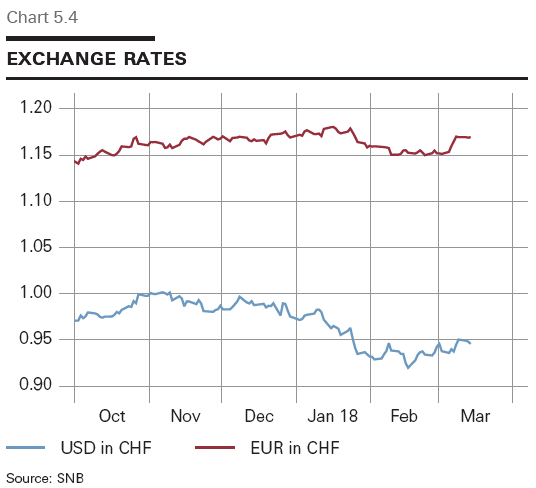
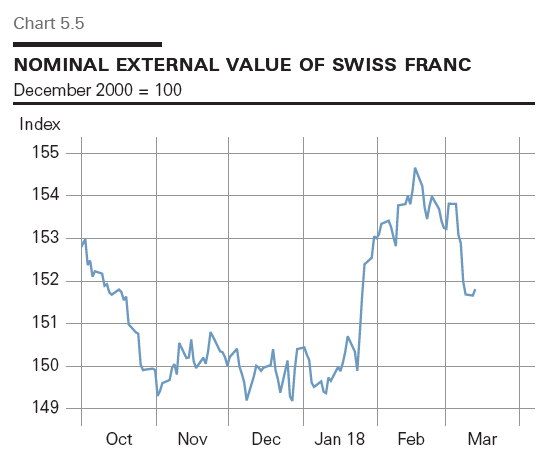
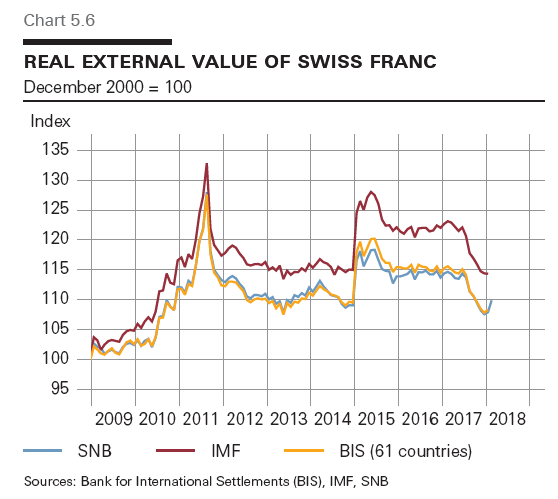
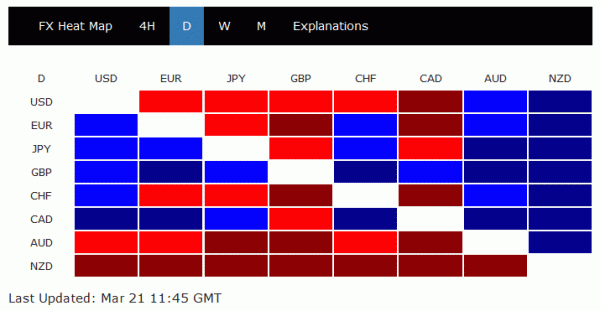
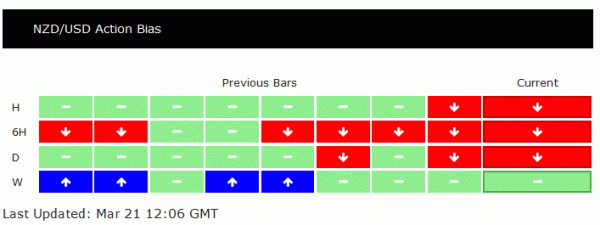
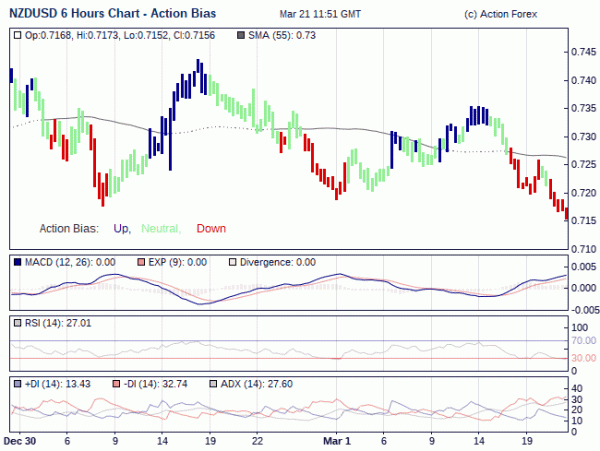
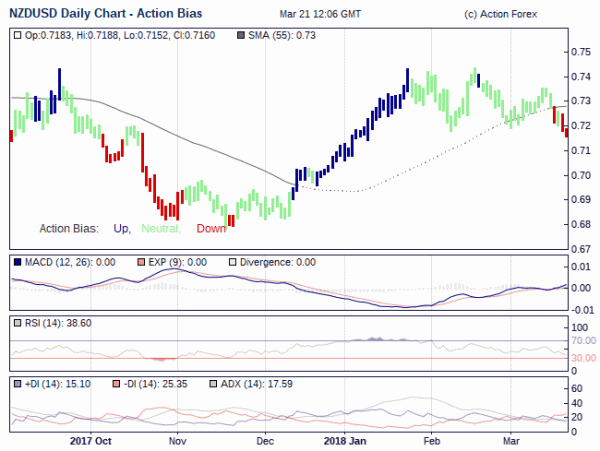
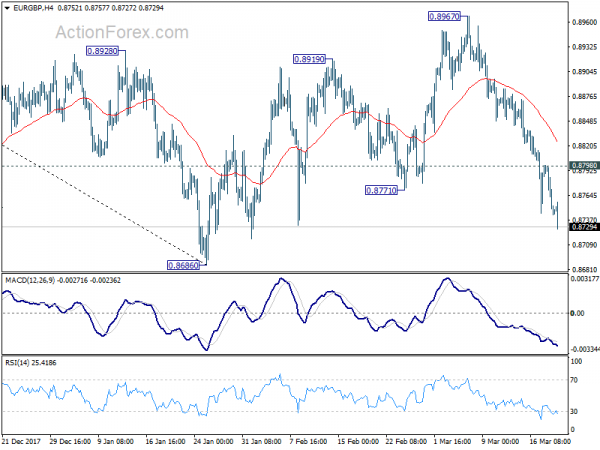
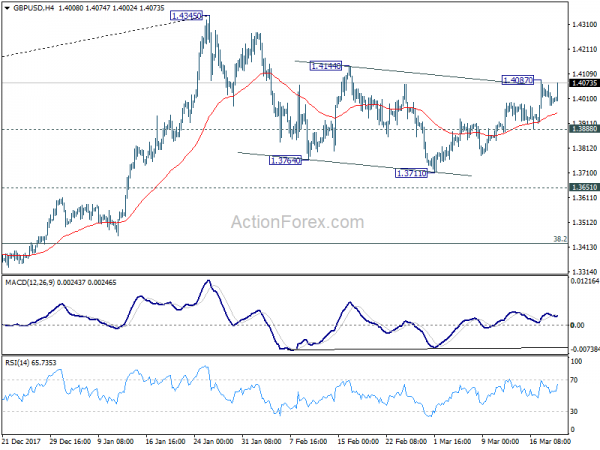
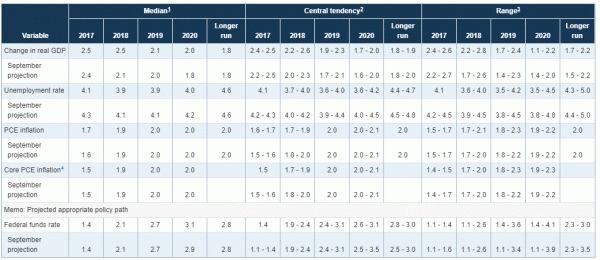
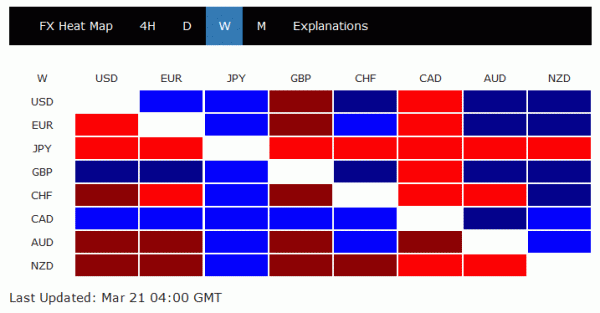
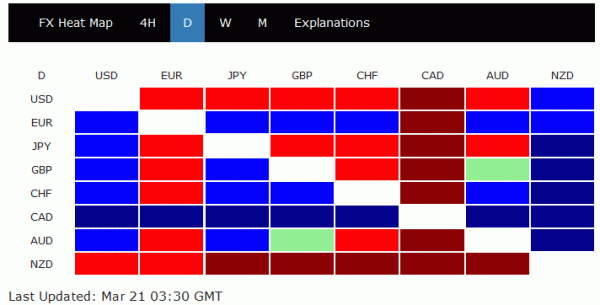
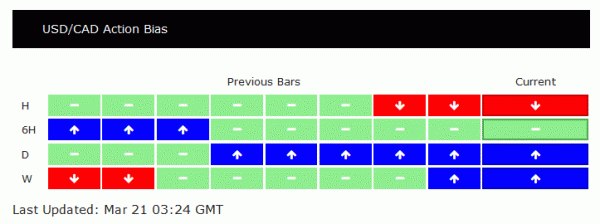
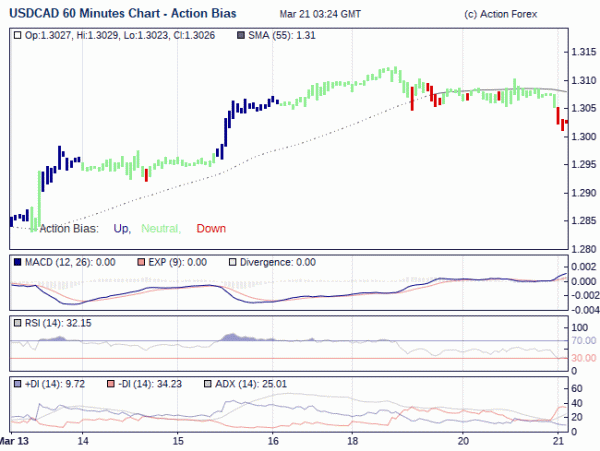
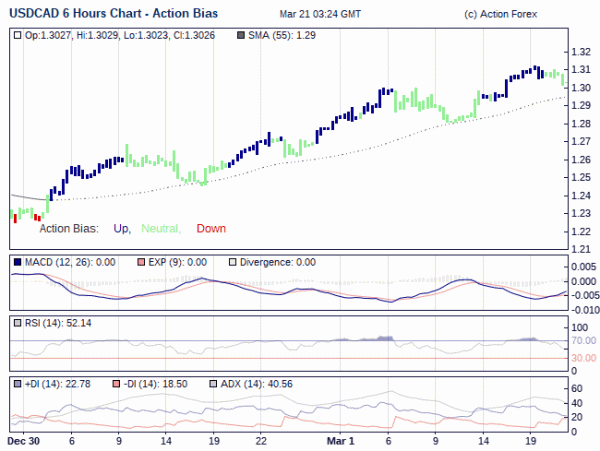
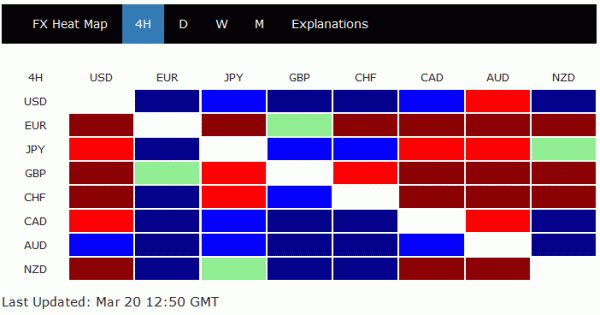
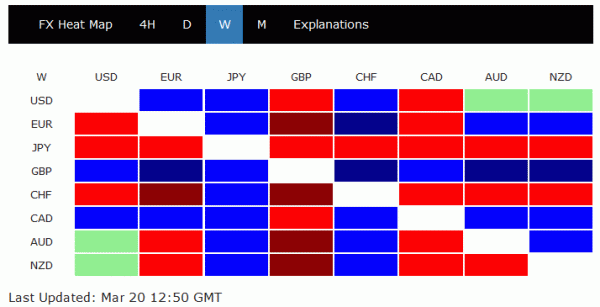
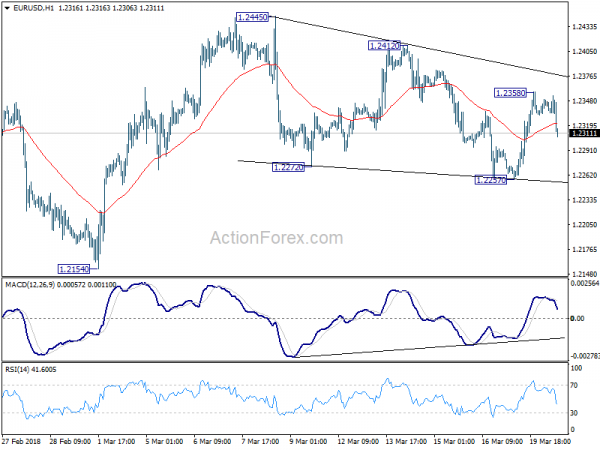
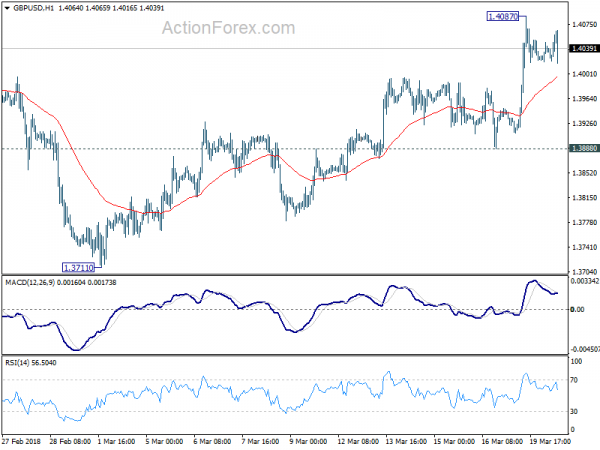

Fed maintains forecast of three hikes in 2018, expects one extra in 2019
Fed delivered the 25bps rate hike and lifted the federal funds rate to 1.50-1.75% as widely expected. But Dollar bulls are clearly dissatisfied with the updated economic projections. The accompanying statement is nearly a carbon copy of the prior one with balanced changes. It added that “recent data suggest that growth rates of household spending and business fixed investment have moderated from their strong fourth-quarter readings.” But at the same time, “economic outlook has strengthened in recent months.” The interest rate decision was made with unanimous 8-0 vote.
Going into the projections:
Real GDP forecast for 2018 is raised to 2.7% (up from 2.5%), for 2019 raised to 2.4% (up from 2.1%), for 2020 unchanged at 2.0%.
Unemployment rate forecast for 2018 is lowered to 3.8% (down from 3.9%), for 2019 lowered to 3.6% (down from 3.9%), for 2020 lowered to 3.6% (down from 4.0%).
PCE inflation forecast for 2018 unchanged at 1.9%, for 2019 unchanged at 2.0%, for 2020 raised to 2.1% (up from 2.0%)
Core PCE inflation forecast for 2018 unchanged at 1.9%, for 2019 raised to 2.1% (up fro 2.0%), for 2020 raised to 2.1% (up from 2.0%).
Federal funds rate projection for 2018 unchanged at 2.1%, 2019 raised to 2.9% (up from 2.7%), 2020 raised to 3.4% (up from 3.1%).